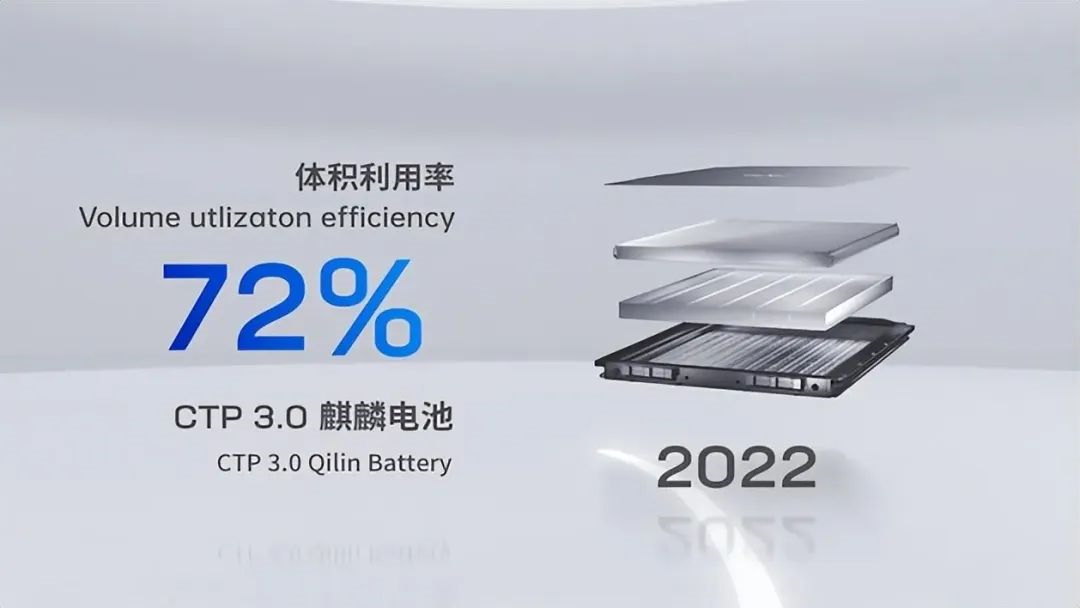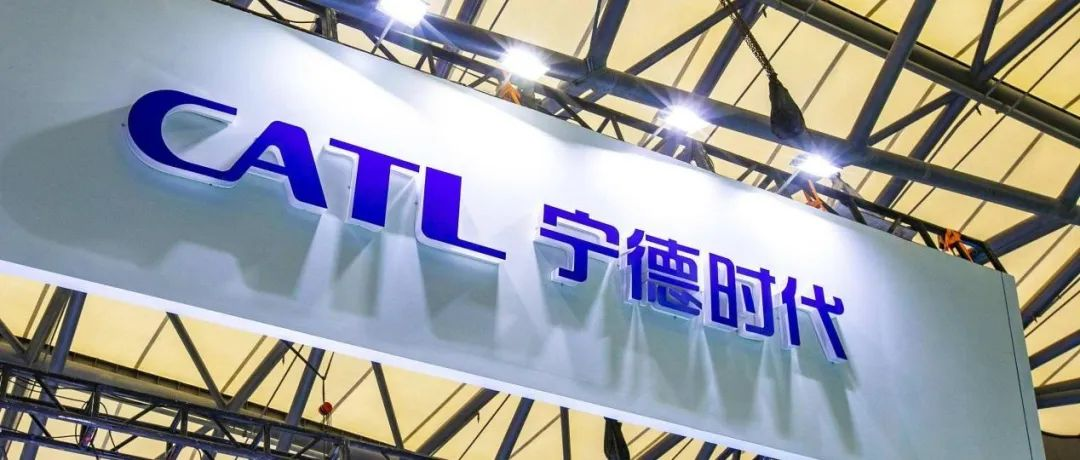Author: Su Qin
Looking at the research and revenue of Ningde Era through the new energy industry, it has to be said that its performance in both technological innovation and large-scale manufacturing has been “magical”. Even under the unfavorable conditions of the global environment, Ningde Era has maintained its momentum of growth, both in terms of capacity expansion and market share.
According to a report from SNE Research, Ningde Era’s global power battery installed capacity was 71GWh in the first six months of this year, ranking first for five consecutive years with a market share of 34.8%, an increase of 6.2 percentage points year-on-year. At the same time, Ningde Era’s sales exceeded 100GWh in the first half of the year, with growth in the second quarter compared to the first quarter.
On August 28th, Zeng Yuqun, Chairman of Ningde Era, stated at the 2022 World New Energy Vehicle Conference, “Our batteries have been sold to 56 countries and regions around the world, with a cumulative installed capacity of over 5 million vehicles. For every three new energy vehicles added globally, one will be equipped with Ningde Era’s batteries.” This indirectly illustrates Ningde Era’s “hegemonic” position in the new energy vehicle industry, with a pivotal role in the industry chain.
Especially in the third quarter of this year, the new energy vehicle market maintained its rapid growth, further contributing to Ningde Era’s revenue. According to the latest data from the China Association of Automobile Manufacturers, in July-September 2022, the new energy market produced and sold 2.661 million and 1.967 million vehicles respectively, approaching the total of the first half of the year, bringing new growth opportunities for various automakers and suppliers, and pushing top power battery companies such as Ningde Era to once again break historical records.
The story of the “Ningde King” continues.
Revenue of 97.268 billion yuan, a year-on-year increase of 232.47%According to the financial report released by CATL on the evening of October 21, CATL achieved a revenue of 97.268 billion yuan during the reporting period, a year-on-year increase of 232.47%. The net profit attributable to the shareholders of the listed company was 9.424 billion yuan, a year-on-year increase of 188.42%. The comprehensive gross profit margin was 19.3%. The third-quarter net profit of 81.68 billion yuan surpassed the first half of the year, continuing to grow by 18.7%.
From January to September of this year, CATL’s total revenue reached 210.3 billion yuan, a year-on-year increase of 186.72%, and the profit exceeded 15.931 billion yuan for the whole year of last year.
At the end of the reporting period, CATL’s monetary funds reached 158.589 billion yuan, a year-on-year increase of 78%.
The rapid growth of CATL’s Q3 financial report is mainly due to the growth of business scale, the capital raised by equity financing arriving, corresponding increase of monetary funds, and investment in research and development.
Even with the impact of the rising price of lithium materials upstream in the first half of this year and the sudden increase in cost pressure, the non-net profit for the first quarter was only 2%. However, the situation improved significantly in the last two quarters.
Due to the rapid development of the new energy industry at home and abroad, both power batteries and energy storage industries have taken off, which has enabled the capacity previously laid out by CATL to be released, and the production and sales volume has increased significantly. It has promoted steady growth in the national market while achieving rapid profitability growth.
CATL still has confidence in the American and European markets. However, in the financial report, we can also see that CATL’s comprehensive gross profit margin in the third quarter was 19.3%, an increase of 0.6 percentage points compared to the first half of the year, but the overall gross profit margin has dropped by 2.58 percentage points.Regarding the issue of declining overall gross profit margin in Q3, CATL explained during a conference call on October 22 that due to some tracing in Q2, it is not entirely comparable with Q2 as a whole. The reason for this is that raw material prices rose sharply in Q1 and the adjustment of prices with customers is a process. With the adjustment of prices and implementation, there will definitely be some impact on Q1, but there is some improvement in Q2.
In addition, prior to the disclosure of the Q3 report, CATL held two conference calls in January to analyze and plan for profit issues. During one of the conference calls, the company also “refuted” the nature of the explanation regarding the Q3 gross profit margin, stating that “since the power battery price adjustment mechanism has gradually landed since Q2, with the adjustment of power battery system prices, the utilization rate of production capacity has increased, and cost reduction measures have been implemented, the gross profit margin of the parent company’s power battery has slightly improved compared to the first half of the year.”
At the same time, from the CATL conference call, we learned that in addition to the financial report, investors are more concerned about topics such as the U.S. anti-inflation bill, shipment volume, sodium-ion battery, and overseas orders.
Regarding the issue of the U.S. anti-inflation bill, CATL also put forward its own views, believing that the overall impact on CATL is relatively limited, and there is no significant change in the judgment on the future growth trends of the United States and Europe.
“Two-Wings” Strategy
Specifically, CATL’s business includes three major segments: power battery, lithium battery materials, and energy storage systems. The rapid growth in Q3 was due to the dual-line growth of power batteries and energy storage businesses.
In terms of power batteries, judging from the installation volume, CATL’s market share is still at the top of the industry, and its total installation volume, ternary power battery installation volume, and lithium iron phosphate power battery vehicle installation volume are all ranked first.
According to SNE data, in January-August 2022, CATL’s global cumulative installation volume reached 102.2GWh, exceeding the full-year 2021 volume of 96.7GWh, and the global market share for January-August was 35.5%, an increase of 5.9 percentage points from the same period last year.In the Chinese market, CATL (Contemporary Amperex Technology Co., Limited) still dominates the market. According to the data released by the Chinese Automobile Power Battery Industry Innovation Alliance, CATL’s power battery shipments reached 92.02GWh, accounting for 47.51% from January to September, 2020. Among them, the shipments of CATL’s ternary power batteries reached 40.44GWh, accounting for 52.40%; the shipments of CATL’s lithium iron phosphate power batteries reached 51.58GWh, accounting for 44.34%.
It can be seen that in the consumer end, CATL’s batteries, whether ternary or lithium iron phosphate, are still in the leading position.
In order to expand production, CATL has made some constructive efforts this year:
In July, CATL invested in the Jining New Energy Battery Industry Base Project in Shandong Jining. The total investment of the project does not exceed 14 billion yuan.
In August, CATL invested in the Hungary Times New Energy Battery Industry Base Project in Debrecen. The total investment of the project does not exceed 7.34 billion euros, building a 100GWh power battery production line.
At the end of September, CATL invested 14 billion yuan to build the Luoyang New Energy Battery Production Base Project in Henan Province.
Regarding energy storage business, CATL made efforts both domestically and abroad in September:
Domestically, CATL signed long-term strategic cooperation agreements with Sunshine Power and Xinjiang Ba Yi Iron & Steel Co., Ltd. respectively to layout the world’s largest photovoltaic energy storage integrated base project to accelerate the integration of photovoltaic power generation and energy storage.
Overseas, CATL announced on September 21 (local time) that it had reached a cooperation agreement with FlexGen, a US energy storage technology platform and solution supplier. CATL will supply 10GWh of advanced energy storage products to FlexGen in three years, which will bring forth FlexGen’s EnerC container-sized liquid-cooled energy storage product.
On October 18, CATL signed a large energy storage contract with Primergy Solar LLC, a US utility and distributed photovoltaic and energy storage developer and operator, to exclusively supply batteries for the Gemini photovoltaic and energy storage project.

R&D budget increased by more than doubled
CATL’s strong R&D has laid a good foundation for its development. In the first three quarters, CATL’s R&D expenditure reached RMB 10.577 billion, an increase of 130.18% over the same period last year.
In terms of technology, in June of this year, CATL released the third-generation CTP Kirin battery, with a volume utilization rate exceeding 72% and an energy density of up to 255Wh/kg, which can support a range of 1000km.

In August of this year, CATL officially announced at the New Energy Vehicles Conference that its Kirin battery will be used in cars. JiKe, a high-end electric vehicle brand under the Geely Group, became the first brand in the world to mass-produce Kirin batteries, and the JiKe 009 became the first production car using CATL’s Kirin battery. In addition, the Kirin battery will also be used in the new AITO Q&A series of SaiLiSi.
In the third quarter earnings call on October 21, CATL confirmed once again that its plan to achieve industrialization of sodium batteries by 2023 remained unchanged.Ningde Times Secretary of the Board Jiang Li indicated that the sodium-ion batteries will officially start mass production next year, and the supply chain layout takes some time. The company has already negotiated with some passenger car customers. The energy density of the first generation will be slightly lower than iron-phosphate, but there are no major issues with on-car use. The scale of shipments will depend on customer demand, and capacity expansion and replication are fast. In terms of cycle life, it is not as good as long-life iron-phosphate batteries but it is close to traditional iron-phosphate batteries. The cost aspect is still uncertain.
On October 25th, Ningde Times, Dongfeng Motors, and Time EV-Service signed the EVOGO battery-swapping project cooperation framework agreement. According to the agreement, the three parties will jointly develop a combination battery-swapping model based on the vehicle-electric separation mode, using Dongfeng Fengguang ES600 as the carrier vehicle.
This means that the Dongfeng Fengguang ES600 has become the third small green loop car model for EVOGO, following FAW Pentium NAT and Aiways U5, and also marks the official entry of Ningde Times battery-swapping system into the FAW Dongfeng.
Expectations for Q4:
Due to cost considerations, the inventory scale of Ningde Times (business scale growth, raw material prices constantly rising) has also been continuously growing. As of the end of the third quarter, the value of its inventory was RMB 79.025 billion, an increase of 96.58% over the beginning of the year and an increase of 4.6% compared with the second quarter.
On October 21st, the domestic battery-grade lithium carbonate benchmark price was RMB 552,000/ton, a 6.65% increase from October 1st. On the same day, Ningde Times indicated on the Shenzhen Stock Exchange interactive platform that it has already established a competitive supply network, including but not limited to long-term, investment, self-made, recycling, and the landing of Jiangxi Lithium Carbonate Base project and the promotion of overseas key resource projects, to reserve resources for the company’s development at the resource end.Due to the pressure from current upstream and downstream materials, the market remains neutral about the performance of CATL in Q4.
Regarding the performance trend in Q4, CATL stated that, “Although the company has agreed on a price linkage mechanism with most of its battery customers, the gross profit margin will still be affected by factors such as raw materials and production capacity utilization. If the above-mentioned factors do not change adversely, the company’s gross profit margin in Q4 is expected to further improve compared to Q3.”
This article is a translation by ChatGPT of a Chinese report from 42HOW. If you have any questions about it, please email bd@42how.com.
